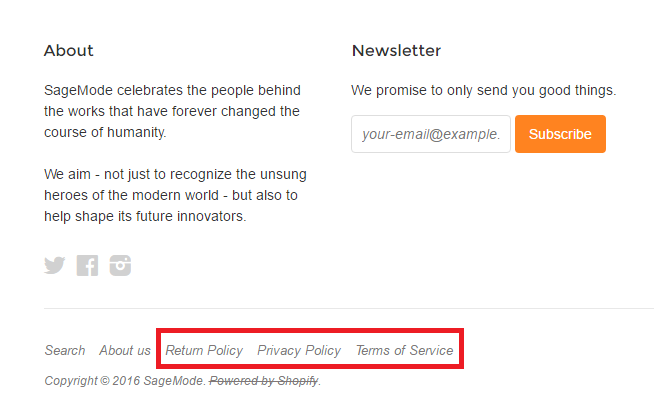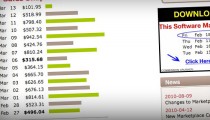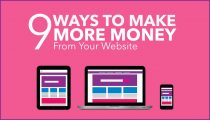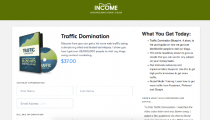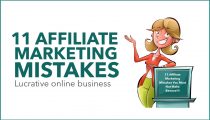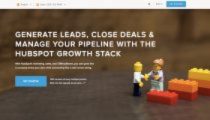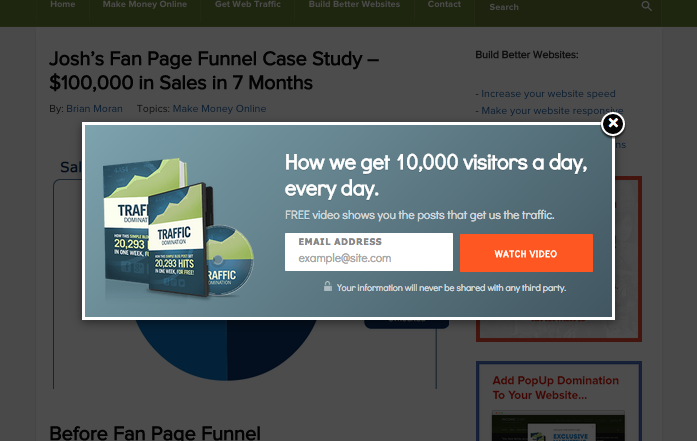Shopify Tutorial – Making Your First Sale [Case Study]
I recently built a website using Shopify (for testing purposes), and I’ve come to realize how almost effortless it is to setup/run an online business these days.
As this Shopify tutorial demonstrates, Shopify makes it easier than ever to get started selling online
What is more, you do not need to spend a lot of money to get started.
Provided you master a few key factors:
- Sell/promote products that you – yourself – would actually buy (product).
- Know the right channels where you can effectively attract your target audience (marketing).
- Earn the trust of your target audience and potential customers (conversions).
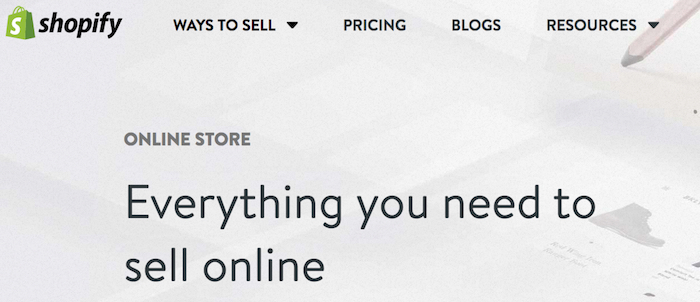
Shopify Tutorial – Your Store Concept
The ideation process is sometimes the most time-consuming part when starting an ecommerce business. Given that you have to take a few things into consideration:
- Choosing the products/categories that you’ll have the best chances of competing to sell online.
- Choosing a business/brand name.
- Finding the best suppliers (especially if you’re going to start with dropshipping).
- What will be your brand/business’ unique selling point?
- How much are you going to make for each product you sell (markups & pricing strategy)?
- How will you approach your marketing?
- How will you scale the business idea?
In my case, I’ve spent 24 hours to brainstorm on products that I’d focus on selling via Shopify.
But the main gist is to choose products that I’m personally interested in – products that I will most likely buy for myself.
My initial options were:
- Portable outdoor gears (AliExpress via Oberlo)
- Minimalistic home furniture (makers/suppliers from Philippines)
- T-shirts (via Printful)
Since I’m mostly doing this for testing, I went with the cheapest option – shirts.
Plus, fulfilling orders will be a lot easier with this option (since the company is based in the USA).
As for the design concepts for the shirts, I’ve always wanted to collect printed shirts of iconic, yet underrated personalities of modern history (like Nikola Tesla, Sun Tzu, Tim Berners-Lee, etc…).
But I didn’t really like the shirts I see listed on Amazon.

So I decided to create our own…
Building Your Shopify Store
The beauty of the continuous evolution of web consumption is that it has become so simple for people to build websites (of any kind) nowadays with the help of CMS like WordPress, Wix, and Shopify.
It only took me 3-4 hours to build a site from scratch using Shopify.
Recommended: Shopify Tutorials
Everything was easy.
From setting up a new account, registering a domain name, getting a theme (I only used a free theme from their theme store), to adding the products (including writing product information for each).
Although, I was too excited to launch the site that I’ve encountered a few minor problems that I know I should have figured out early on, like:
- Forgetting to edit the “Shipping zones & rates” – as I’ve originally planned to have free shipping on all products (which caused us a few abandoned carts on the first 2 days of the site).
- Incorrect installation of conversion tracking for Facebook Pixel.
- Launched the site with one product and without a logo – yep that’s how excited I was.
So our team took a step back, and decided to temporarily close the site for a few days.
I waited for our designers to finish the first batch of t-shirt designs and the site’s logo – then relaunched SageMode immediately.
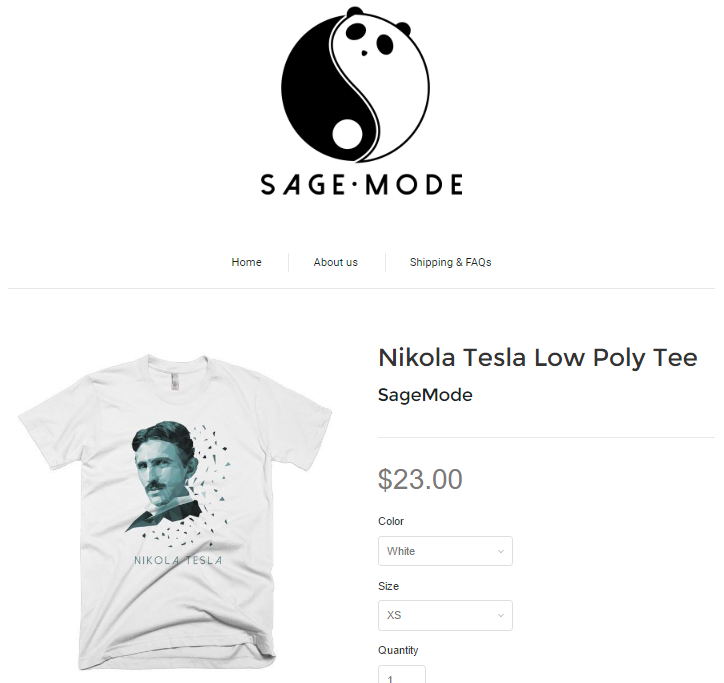
Shopify Tutorial – Marketing Your Shopify Store
Since I have a strong background in SEO and content marketing, I initially figured that driving traffic to the site would be the easiest part. (and relatively speaking for me, it is)
But for this 7-day case study, I wanted to focus on more Instant Traffic, rather than SEO.
So I mainly focused on Facebook ads (and Instagram) for the overall traffic acquisition.
However, the most difficult part I’ve learned along the way is encouraging people who are already coming to your website to buy the products (which I’ll explain later on).
Getting started…
I first started promoting the site’s key products using conversion-focused Facebook ad campaigns (Website Conversions via Power Editor).

This way, the ads that I’ll create will be displayed by Facebook to their users who will most likely convert (based on historical activities).
Note: It’s imperative to have Facebook Pixel installed properly on Shopify (guide).

I only started with a budget of $1/day for each product (for both Facebook and Instagram sponsored posts).

The key is in audience targeting.
Tips for Facebook/Instagram marketing:
Be as stringent as you can in creating your audience for each of the product you’re promoting.
1) Narrow your audience further. Aside from targeting key interests (related to your product), it’s also best to explore and target behaviors (related to online shopping) and demographics (education, work, annual salary, etc…) to maximize the value of the traffic you’ll get.

2) Use high quality and visually appealing images (if you’re promotions are directly pointing to product pages).
3) Continuously test your ad copy. Being straight and succinct with your ad copies seems to work best most of the time.
See and learn how other successful brands approach their ad copies.
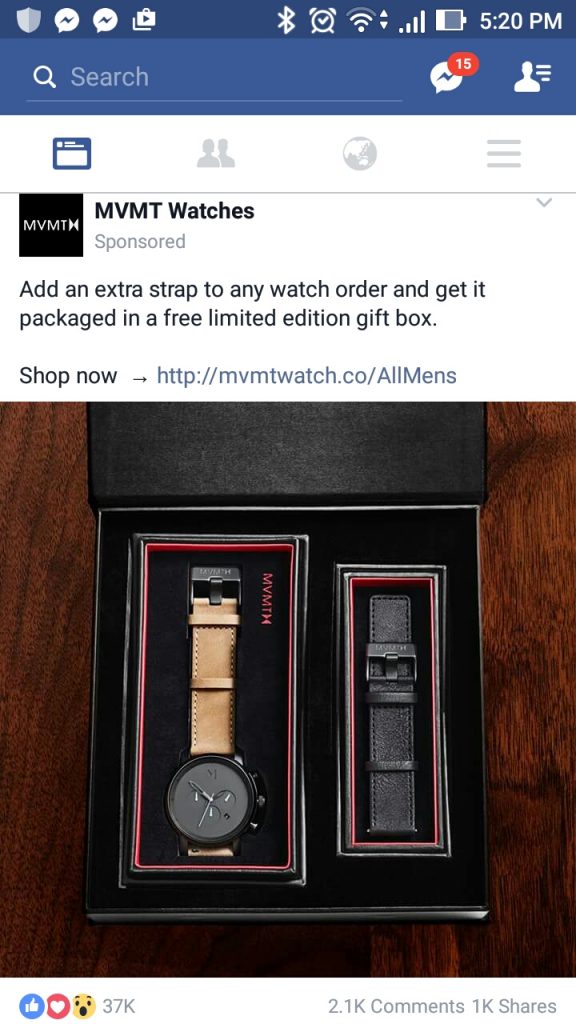
4) Location options – make sure you’re targeting the right people in the location where your ads will be showing up.
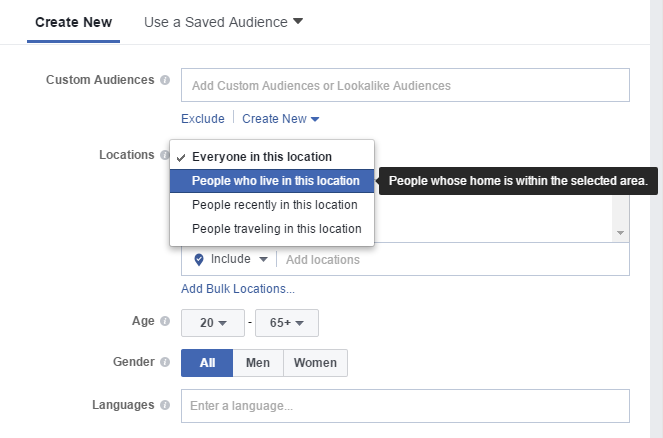
5) Test other creative formats – especially “Carousel” in which you can promote and showcase multiple products.
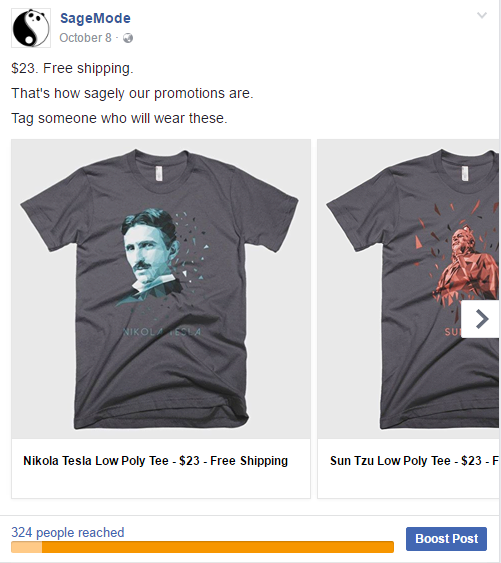
Conversion Optimization In Your Shopify Store
When I first launched the site, I intended not to include some of the most essential site elements that typically help boost a site’s conversions – to really see the difference.
After a couple of days, I’ve seen how valuable these small site changes are in terms of improving revenue generation.
Once you’ve figured out how to get qualified traffic to your business, the next vital piece of the puzzle is how you can establish trust.
The key is to make the site (not just appear) legit.
1) Create an identifiable logo – something that will resonate well with your target audience.

A well-planned site branding is what will make it easier for you to sell in the long run.
2) Unexpected add-ons (ex: giving back) –donate a portion of your profit to organizations/causes your business genuinely supports. It is one of the best ways to build a community around your business.

3) Quick FAQs on product pages – Include the other necessary details that most potential customers will try and look for once they are on the site.

Make it easier for them to find this information.
4) Create disclosure pages (Return Policy, Privacy Policy, Terms of Service)
You can easily generate templates of these pages on Shopify (via Settings > Checkout).

These small changes and additions to the site helped us make our first sale within the week.
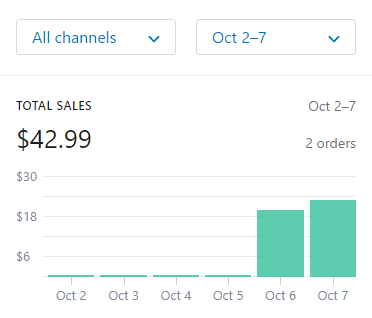
Shopify Store Setup – The Next Steps
The entirety of the initial process of building the business – from conceptualization, building the site, bringing traffic, and re-optimizing its key pages – took us a small capital to start (domain registration, Shopify fees and $20 initial fund for Facebook ads) and only several free hours of our time (around 1-2 hours per day).
Now that we’ve somehow validated that there’s indeed a market for the product(s) we are selling, it’s more reasonable for us to spend more time in trying to grow the business.
Here’s a peek to what we should be doing next:
- Start investing on big content asset development to drive more earned traffic (via non-paid social and organic search). We’ll particularly focus on creating content that can actually engage our target audience, such as list-type articles, data visualization and more image-based content (comics, memes, etc…).
- Increase ad spend on key products (particularly designs that have a larger market size). Also to allocate budget for Facebook Remarketing.
- Create more products and collections that are aligned to the site’s brand objectives.
- Start capturing more email newsletter subscribers and organically grow the site’s social following on key social platforms (Facebook, Instagram, Twitter, etc…) through consistent content marketing efforts.
- Eventually, collaborate with other designers/publishers to create a community within the site.
These however are topics for a future Shopify Tutorial.
For now, the important thing to do is get started – the world of selling physical products is waiting for you! It really is much easier than you think – thanks to SHOPIFY.
One final thought…
An increasing number of Shopify Stores are adding Popup Domination to their marketing arsenal. With a Countdown Themes created specifically for online selling Popup Domination is the perfect addition to any online store.
About the Author: Jason Acidre is the the author of Kaiserthesage where he writes about SEO. Follow Jason on Twitter
"Do Not Write Another Blog Post Until You Watch This Free Video..."
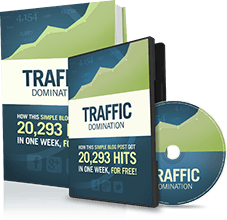
Watch this free video to learn...
- How I got over 10,000,000 people to visit my websites.
- The types of blog post that got me all that traffic.
- How to get someone else to do it for you!




